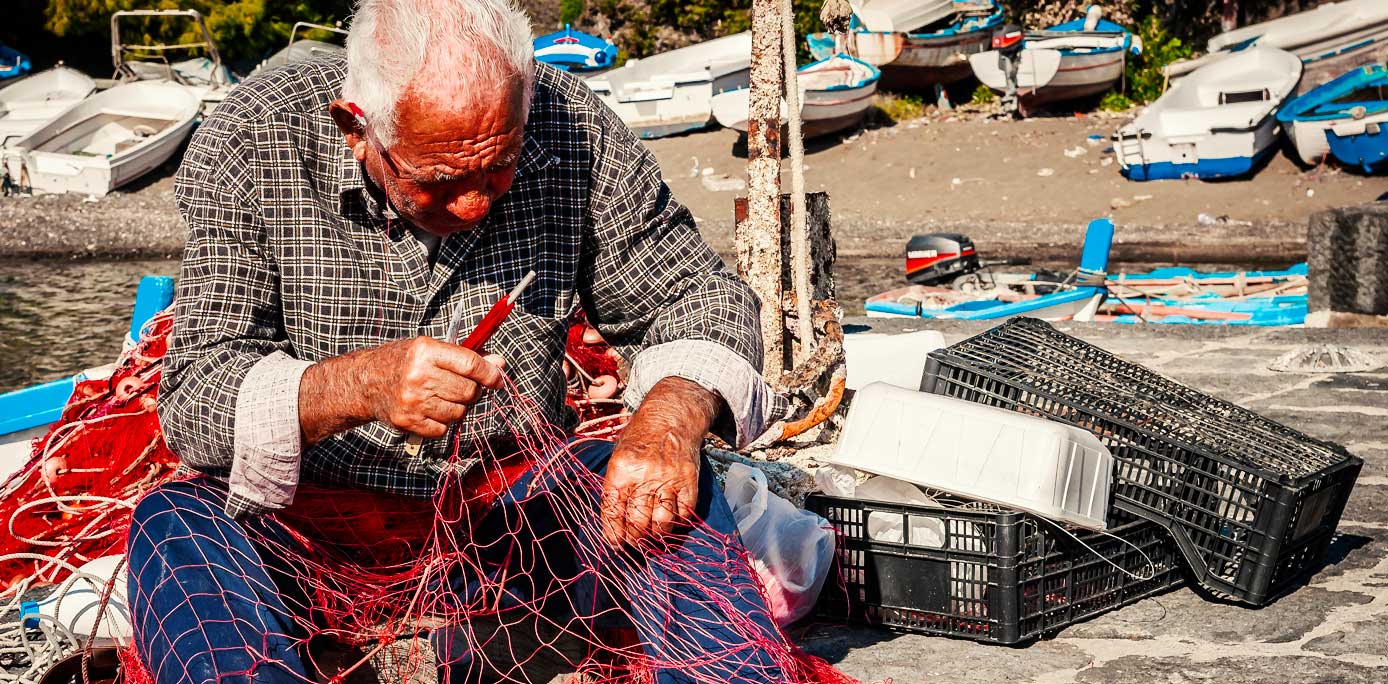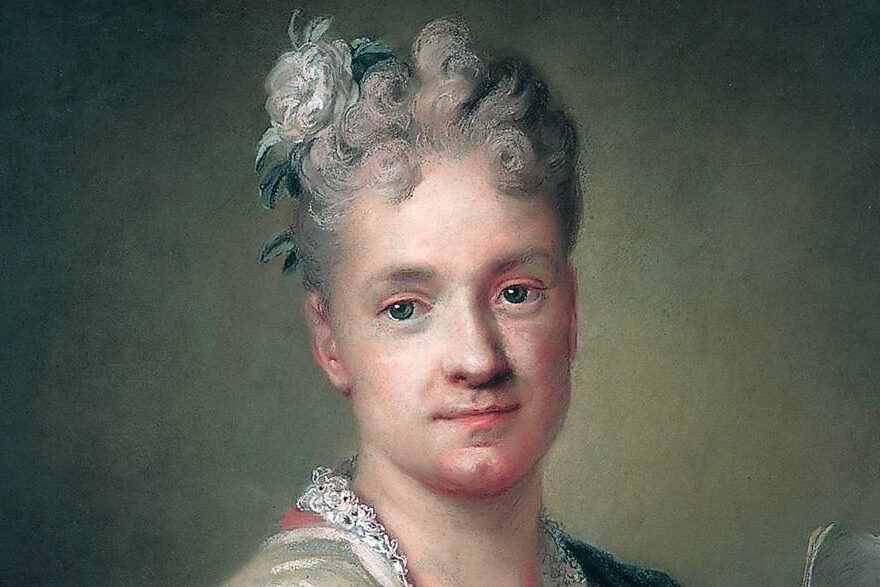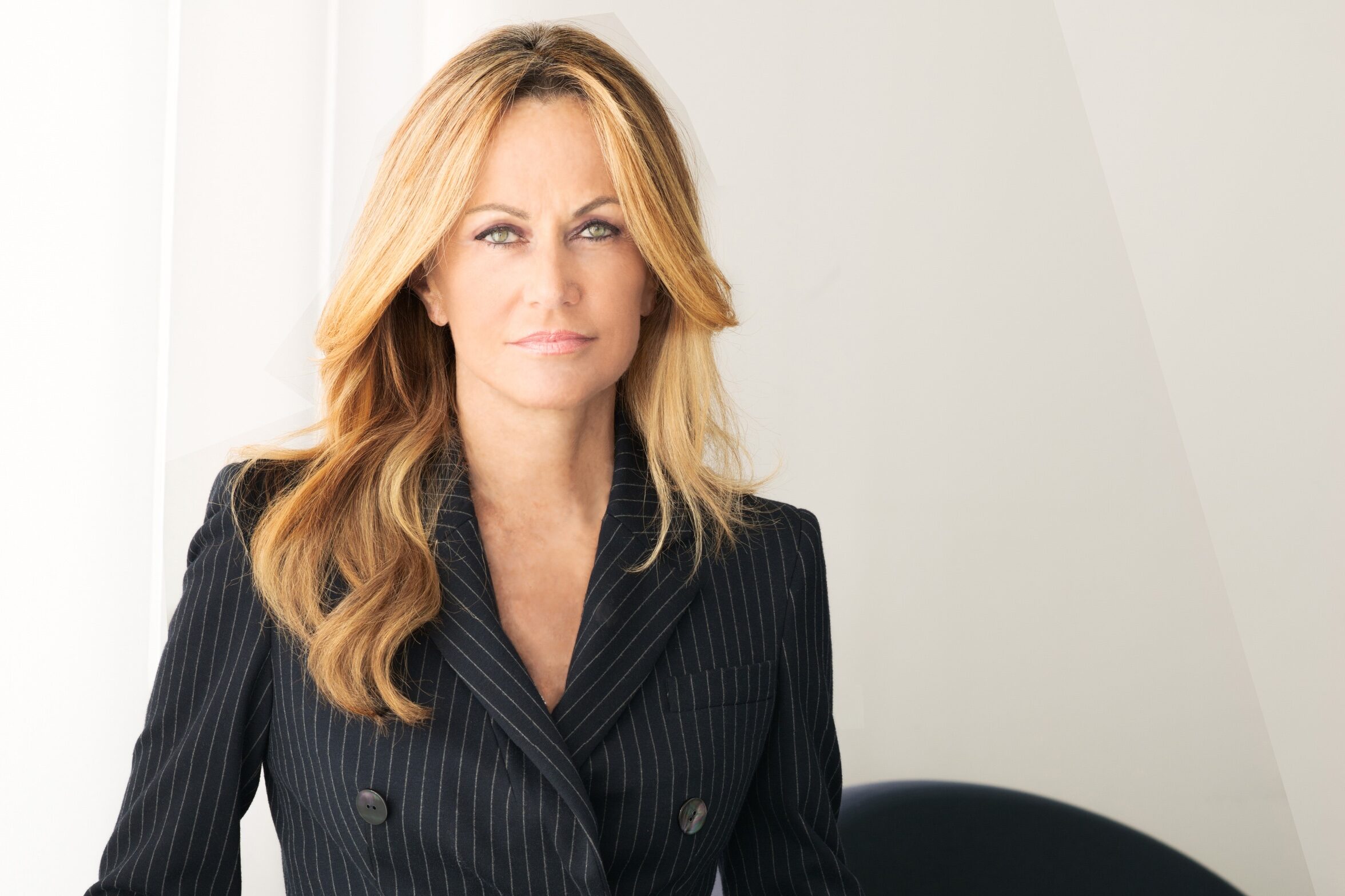It was the eve of a fervent celebration planned for the Feast Day of Saint Joseph in 1906 when an earthquake struck the island of Ustica some 72 kilometers north of Palermo, Sicily, in the Tyrrhenian Sea. On that unsettling night of March 18, the entire population woke up, panicked and rushed out into the street.
The Usticesi managed to collect some things from their homes and left. They were very fortunate to survive. Shock waves continued for almost a month, until mid-April. On April 18, in a place very far away, a cataclysmic shutter and noise like the roar of 10,000 lions toppled 28,000 buildings, killing thousands of people. Now known as the Great 1906 San Francisco Earthquake, it still ranks as one of the most significant earthquakes of all time.

Il faro di Ustica e una piscina naturale – Ph Vincenzo Padovani
The San Franciscans were less fortunate than the Usticesi that month. The Usticesi survived and fled to Palermo, where some of them continued doing what their friends or family had already done for a long time: they boarded a direct ship from the port, faced a dangerous journey and landed in New Orleans.
“New Orleans had been a destination for many citizens of Ustica since 1830,” explains Vito Ailara, honorary president and co-founder of Centro Studi e Documentazione Isola di Ustica (Ustica Studies and Documentation Center).
Ailara says that between 1850 and 1870 the city of New Orleans and nearby areas had the largest Italian immigrant population in the US. New Orleans, in fact, had the first-ever Italian American community. Some of the Usticesi would replace the African slaves emancipated after the US Civil War, a conflict that several Usticesi fought in.
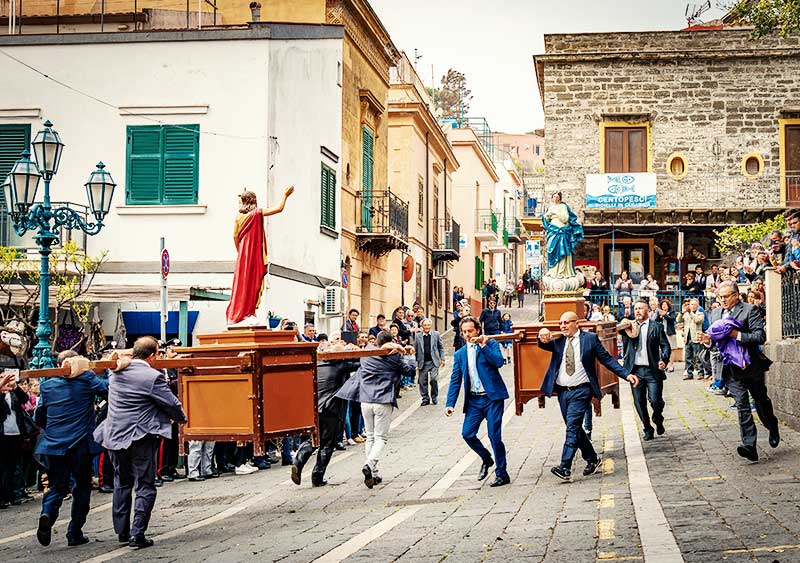
Traditional Easter procession in Ustica – Ph Vincenzo Padovani.
“In the meantime, our people continued to flee to Lousiana,” Ailara says. “By 1910, the population of the city’s French Quarter was 80 percent Italian.”
The Usticesi people from New Orleans have always been a tight-knit community. Today it still consists of some 80,000 people.
In 1879 they founded the San Bartolomeo Society, officially known as Congregazione di San Bartolomeo Apostolo, so that “members shall find relief and assistance in case of need and wherein members shall exercise towards one another benevolence, charity and camaraderie.” The San Bartolomeo Society is still very active today.
“Through society activities and our portal to the world, www.ustica.org, we strive to fulfill the mission of our forefathers and foster the sense of community shared by all descendants of Ustica,” says Chris Caravella, current president of the San Bartolomeo Society in New Orleans.
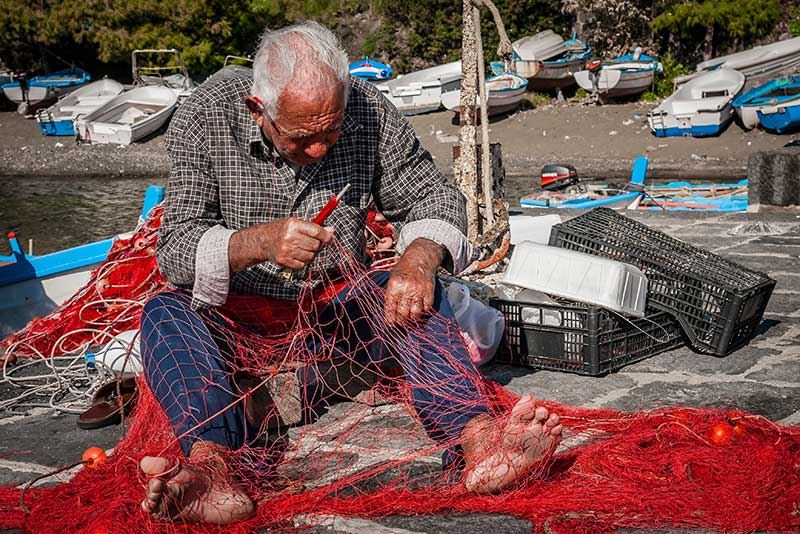
A fisherman at work with his nets, in Ustica . Ph Vincenzo Padovani
A noted Usticese was Emile Camarda, the founder of Commander’s Palace, a famed restaurant that has been a New Orleans tradition for nearly 140 years.
“Emile was born in New Orleans on September 4, 1857, the first son of Peter Comarda and Josephine Venuti,” explains Caravella. “His birth bears the distinction of being the first recorded in the New Orleans civil records to an Usticese parent. Peter emigrated from Ustica to New Orleans in 1852.” Swing musician Louis Prima and Dixieland trumpeter Joseph “Sharkey” Bonanno, aka “Sharkey Banana”, were also born to an Usticese parent in New Orleans.
The Usticesi from America are proud of their roots in Ustica. The island is so beautiful: It is a nature-filled volcanic outcrop that springs up from the deep blue water popular with scuba divers. Visitors are stunned by the beauty of Ustica’s grottoes, especially the Blue Grotto, where in the afternoon the sea takes on intense azure color, the Green Grotto with its emerald reflections and the Gold Grotto, where a gilded glow reflects on the water. One of the most beautiful beaches is Cala Sidoti, a delightful cove of dark pebbles washed by a beautiful shallow crystal-clear sea.
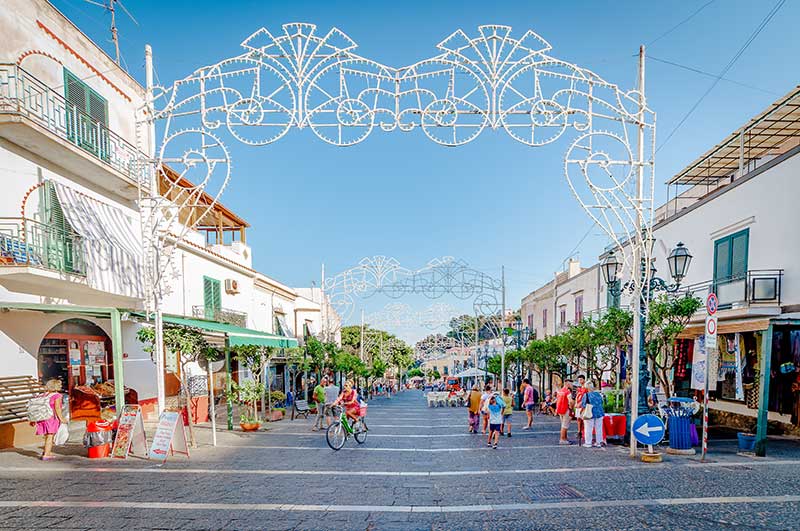
Piazza Umberto I, a Ustica – Ph Vincenzo Padovani
“My kids are so lucky to live here,” says Vito Ailara. They didn’t have to abandon this paradise. They were not forced to leave everything behind to escape poverty. They are so lucky. They run a family hotel, the oldest hotel on the island, located just steps away from the town’s main attractions including the Church of San Ferdinando Re, the Port of Ustica, an underwater archeology museum at Torre Santa Maria and a laboratory-museum of volcanology at the Rocca Della Falconiera. Just a few minutes away are an ancient Bronze Age village, as well as the island’s most popular seaside resorts and Zone A in the Marine Protected Area.
Since 1880, hundreds of Ustica families in New Orleans have resettled in San Francisco. “We are in contact with several of them such as the family Lauricella, the family Tranchina, Caserta, Palmisano, Manfré, etc. We are especially close to Fred Lauricella known as Fred Laurice,” says Aliara.
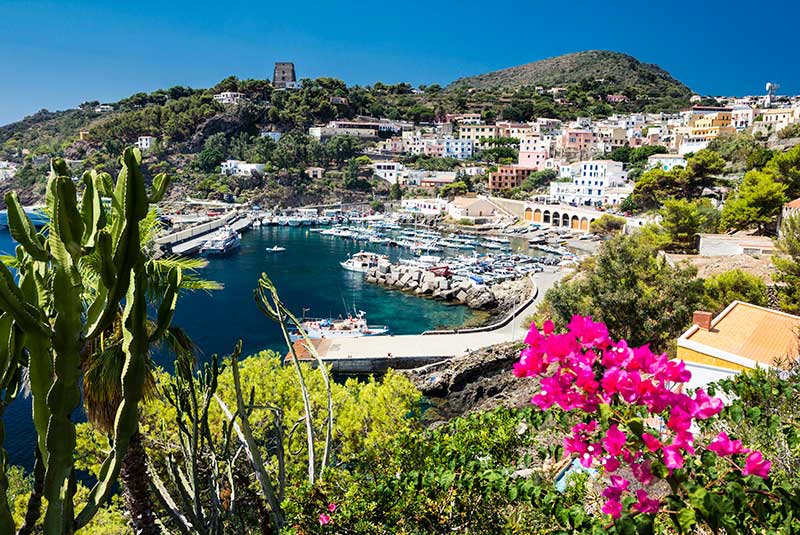
Ustica, in tutta la sua bellezza e i suoi colori, tipicamente mediterranei © Tenedos | Dreamstime.com
Some families moved to the greater Los Angeles area as well. “I am thinking about lawyer Marcello Di Mauro,” says Ailara.
Ustica deserves more travelers. It is a little remote, but is so beautiful and its residents are warm, soft-spoken and welcoming.
Mussolini used the island as a prison for his political opponents. Marxist thinker Antonio Gramsci was exiled here for 44 days before being moved to several other prisons over an 11-year span. His 22 letters from Ustica are combative, hopeful and optimistic. They didn’t portend his tragic ending.
